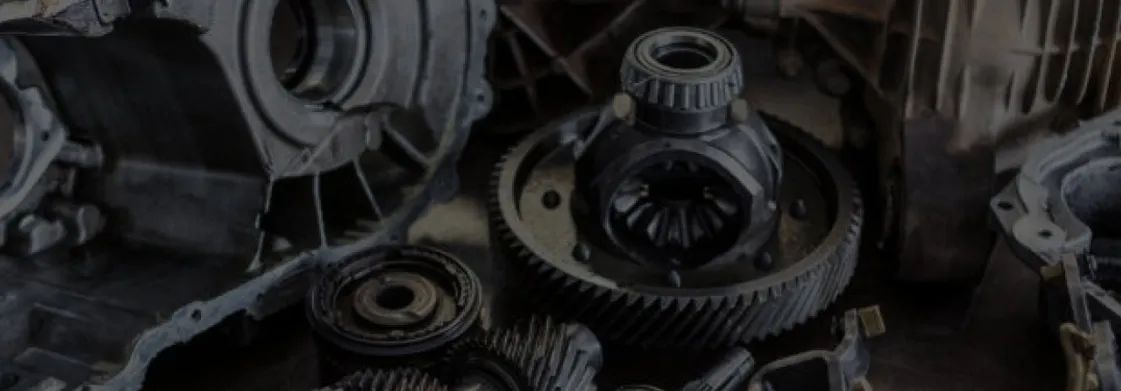
Most products require some combination of custom and stock components. Custom components can be used in instances where a part must perform a unique function, perform a generic function to a specific specification, or combine multiple functions in a unique way to satisfy the user’s needs. Stock parts are preferred in instances where the component performs a common function and/or a manufacturing limitation would necessitate a large investment for custom parts.
Just because a company owns a custom product doesn’t mean that every component in that product is custom made. Some products are made completely of assembled stock parts, while others are completely custom components, but most are a combination of the two. While designing a new product, it’s important to understand when to design custom components or to source a stock part.

The design benefits of developing custom parts are intuitive- a custom part can function precisely as needed by the product owner and the user. A custom part’s function could be completely novel. More often, a custom part might perform a generic function (like one of the simple machines) to the precise specifications needed by the user. Sometimes custom parts combine two or more generic functions into one part, eliminating unnecessary components and simplifying an assembly.
The downsides of developing custom parts are mostly economic. There is a cost associated with designing custom parts. Furthermore, custom parts are typically more expensive to manufacture than their stock counterparts. This is because custom parts have a single buyer- the product owner – and that buyer may not immediately be able to generate the demand necessary for lower per-unit production costs.
However, there are also business and economic benefits to custom parts outside of their design utilities. Developing custom parts confers a higher degree of ownership to the product owner. After all, it’s difficult for a competitor to copy your custom parts as a part of their product without expensive reverse engineering. Furthermore, I find that end users perceive higher quality in products with custom parts than in those mostly assembled from stock material.
A common place where custom parts are chosen is in injection molded products. Since the injection molding process uniquely allows for many features in a single part, product owners are commonly willing to invest in design and custom tooling upfront for their plastic parts.
Stock parts, also known as off-the-shelf parts, are parts available for purchase by anyone. Stock parts appeal to product owners in that they can be used with little thought to design or manufacturing. However, heavy reliance on stock parts results in a product that can be easily emulated by anyone.
Stock selections, though numerous, are ultimately limited. Product designers may have to compromise on precise specs to take advantage of stock components. That’s why engineers in the aerospace industry- where every spec is critical – often use custom components where consumer product designers would never.
In general, using stock parts is less expensive than custom parts. Exceptions are at very high volumes, where it makes sense to “cut out the middle-man” and reverse engineer stock parts. What this volume is simply depends on the part type and the manufacturing process.
A common place where stock parts are used is for screws and fastening hardware. Since these parts are standardized, widely available in numerous sizes, and precision machined, it usually makes little sense for a product owner to design and manufacture custom fasteners.
Most products are ultimately built from a combination of custom parts and stock parts. A good product designer can effectively design custom parts, source stock parts and knows how they will come together to make the product.
As a product designer, I have a solid idea which parts will be custom or off-the-shelf early in the process. Parts that require unique geometry, preform a novel function, or combine two or more functions in a unique way will ultimately be custom. Parts that perform a familiar function will be stock. Once this is figured out, it’s a good idea to start looking at stock selections and getting a feel for what’s available (I recommend the McMaster-Carr library as a great starting point). Selecting stock components earlier rather than later is desirable because the custom parts can be designed specifically to work with the stock parts.
Some product owners expect a factory to spec and source stock components. I believe this responsibility falls on the product designer. It’s important for the designer to understand exactly how the stock parts work with their custom parts and confirm that the stock parts will not introduce any unexpected variable to the assembly. I always spec every part in the assembly and allow production partners to substitute only if we can confirm that the parts are interchangeable.
Ultimately, a good product designer needs to know how to how to develop custom parts, source stock parts, and make them work together. Our team of designers and engineers excel in each of these. We understand the pros & cons of each and give our clients a good sense of how to choose one or the other. We design custom parts for optimal manufacturing according to our clients’ needs; we also devise creative ways to utilize stock parts, sourcing them at affordable prices and integrating them with our design workflow. The result is economic and well-built products for our clients.